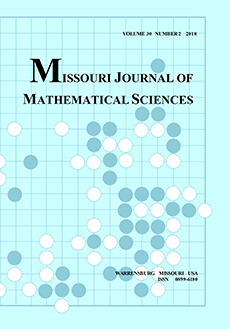Abstract
We study lower and upper bounds of the isoperimetric deficit of equichordal curves in $\mathbb{R}^2$. An equichordal curve is defined by its polar radius $r(t)=p(t)+c$ with $t\in \mathbb{R}$, constant $c$, and $p(t)+p(t+\pi)=0$, such that chords through the origin are always of length $2c$. In the convex case, the isoperimetric deficit of equichordal curves has a non-attained constant upper bound. Otherwise, non-convex equichordal curves have an unbounded deficit. However, we prove that for any sufficiently regular equichordal curves $r(t)$, even non-convex, we can find associated curves of same enclosed area whose isoperimetric deficits bound from above and below the isoperimetric deficit of the equichordal curve $$0<L_{y_0}^2-4\pi A_{y_0} < L_r^2-4\pi A \leq L_{y_{max}}^2-4\pi A_{y_{max}} ,$$ where $L_{y_0}$ and $L_{y_{max}}$ refer to lengths of curves with radii $y_0(t)=\sqrt{p(t)^2+c^2}$ and, respectively, $y_{max}(t)=\sqrt{p(t)^2+c^2+\frac{p_m^2+c^2}{p_m}p(t)}$ with $p_m=\max\ |p|$.
Citation
Zhenyi Wang. "The Isoperimetric Deficit of Equichordal Curves in $\mathbb{R}^2$." Missouri J. Math. Sci. 31 (2) 192 - 200, November 2019. https://doi.org/10.35834/2019/3102192
Information




